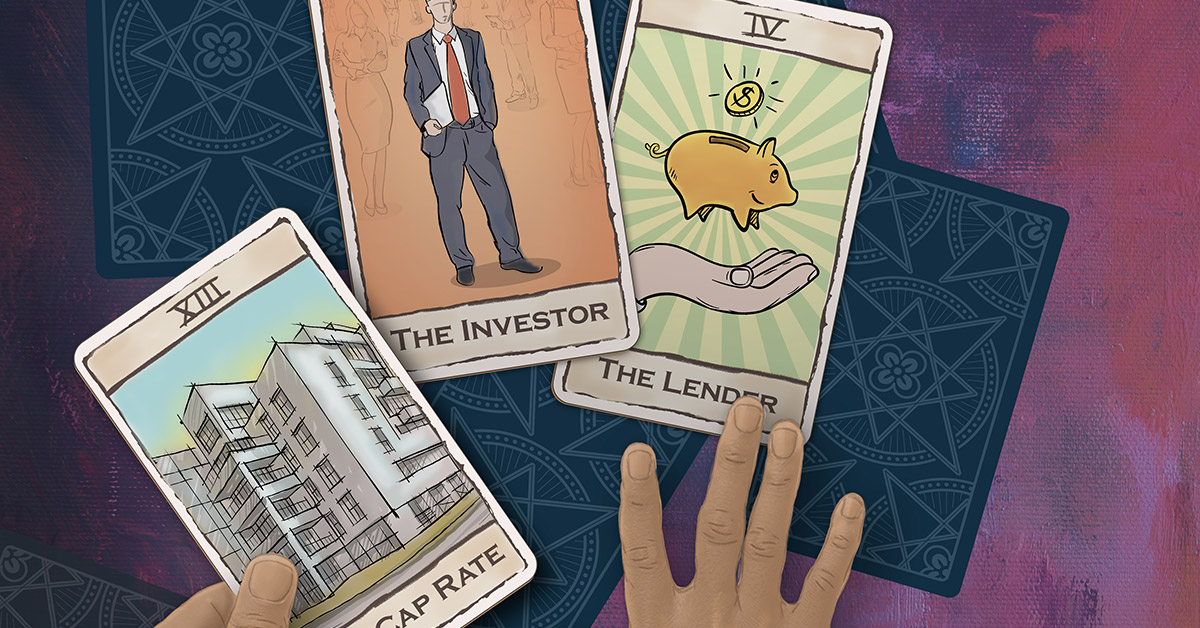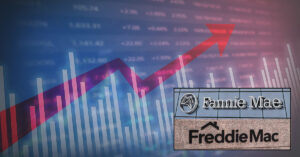In an era of automation and desktop underwriting, commercial mortgage brokers and their clients may be tempted to accept the value of a property as they would a deck of tarot cards. It is important to remember, however, that underwriting has a human element. People key in the numbers that today’s desktop underwriting programs use to produce a value.
Theoretically, you should be able to come up with a consistent value for a commercial property by using simple math. After all, numbers are numbers, and they shouldn’t lie. Yet, two different people can use the same information given to them by the same person and arrive at two different values. This suggests that the values plugged into canned software and spreadsheets are open to interpretation and can be manipulated. A basic understanding of underwriting can reveal a good or bad hand in a deal.
By understanding the basics of underwriting, a commercial mortgage broker can help protect clients from making bad decisions. If you don’t understand underwriting, you are literally at the mercy of the person dictating the value. A mistake can cost the borrower millions of dollars.
Evaluating a property starts with discovering its income. Let’s not forget, a commercial property is doing a job. Instead of earning an hourly rate, the property is generating cash via its monthly rents. The income is one half of the equation that determines the value.
Assume, for example, a 5,000-square-foot retail center with five tenants. The building is fully occupied and has a net annual operating income (NOI) of $300,000. The net income is derived by subtracting expenses from the gross income. This particular building leases for $10 per square foot each month, so it has a gross income of $600,000 per year. The property has $300,000 in operating expenses, which includes the costs for property management, capital improvements, professional fees, repairs and so on.
Once the income is calculated, the property’s expected rate of return, or cap rate, needs to be plugged into the equation to get a value. At this stage, an underwriter’s opinion comes into greater play. The income side of the equation can be discovered through the lease agreements and expense reports. The building’s cap rate, though, is more open to interpretation that can affect the property’s value. Changes in the cap rate can radically alter the property’s purchase price. It is at this stage that an investor runs the risk of relying on another person’s opinion and overpaying for a property.
Calculating cap rates
The cap rate is a fundamental concept used to determine the value of commercial real estate, but cap rates vary by property type and market. A cap rate also can be subject to rapid changes due to market conditions and issues related to a particular property. In basic terms, a cap rate is the return the investor demands for the investment. A cap rate also is a measure of risk. If the cap rate is higher, then the investment risk of the property is higher and the investor demands a higher payment in return for that risk. Typically, as cap rates rise, the value of a property decreases.
Using the cap rate to derive a property’s value is simple math. You take the net operating income and divide that by the cap rate. A retail property that has an NOI of $300,000 and a cap rate of 10 percent, for example, would have a value of $3 million ($300,000 divided by 0.1).
An underwriter can get a general sense of the appropriate cap rate by comparing similar properties within the same market. Various analytics companies provide estimates of cap rates in different markets for each property type. These companies can be a good resource, but mistakes can occur. An underwriter may apply the same cap rate to similar properties, but if they have not looked at the market deeply enough, some comparable properties may be overlooked. This can affect the valuation of your client’s future investment.
The cap rate also may change due to conditions at the property level. Replacing a local tenant for a national credit-rated tenant, for example, will lower the cap rate overnight and subsequently increase the property value. Losing a major tenant to bankruptcy may have the opposite effect.
The value of underwriting
An investor can run into serious problems when they do a poor job of underwriting. Established lenders typically use strict guidelines to gauge a property’s risk and avoid the pitfalls of overvaluing properties. By contrast, the average investor in distressed properties or value-add investments can miss the mark and may lose a lot of money.
Say, for example, a lender will finance up to 65 percent of the purchase price. The investor proceeds with the purchase, but has done a poor job of evaluating the property’s value and performance over the previous five years. This poor underwriting can not only result in a loss of the borrower’s initial investment, but it also can send the property into foreclosure proceedings and long legal battles.
One risk is to rely too heavily on pre- packaged software and online templates. Someone with a few catchy phrases and a good-looking website can market themselves as an expert in property valuation. Such a person can put the investor on a path to a huge loss. Even if you are not doing the underwriting yourself, it is important for a mortgage broker to understand all the aspects of the process. It will help you understand the values that are being established for your client’s future investments.
A desktop underwriting system can fail to pick out nuances at the property level. Take the time to read through the leases. Make sure there are no expirations that will occur within the period the client has established to stabilize the property. One lost lease can be catastrophic to a property’s performance and can cause a domino effect. Also, brokers and investors should spend time at the property to ensure that what the underwriter is representing is actually happening.
Examine each unit to make sure that the estimated tenant improvements and capital expenditures are accurate. Desktop underwriting may not be equipped to factor in these variables and can sometimes leave the investor with unplanned expenses. Finally, if the property has vacant space, speak to local real estate brokers to get an idea of how much you will spend to get a qualified tenant. Unplanned expenses and prolonged vacancies will eat into the investor’s projected profits.
When underwriting a commercial property, it behooves mortgage brokers and investors to tread cautiously. Always underwrite conservatively. A higher future value is always appreciated more when it is greater than the original projected value. Never let your emotions take you down a path that is unrealistic. As challenges at the property arise, an investor may be forced to adjust their outlook for future profits. A borrower who doesn’t have a clear picture of the property’s true value and performance outlook should consider taking a pass on the deal. It is the safest decision.
• • •
Remember, just because a value has popped up on a spreadsheet after plugging in a few numbers, that doesn’t mean that value is correct. There are many moving parts in commercial real estate. The difference between a successful investment and failure often depends on the quality of the underwriting. The investor needs to strike a balance between the humanity in the process and new technologies made available by desktop underwriting.
Author
-
Tommy Snyder is president of 1619 Capital Partners, a Dallas/Fort Worth-based investment-consulting company that specializes in commercial real estate lending and investments. After more than nine years with C-III Capital Partners, Snyder left to form his new company — offering clients a range of expertise, from loan restructures and lending products to investment opportunities and guidance through the world of note and real estate-owned (REO) auctions.
View all posts




















































